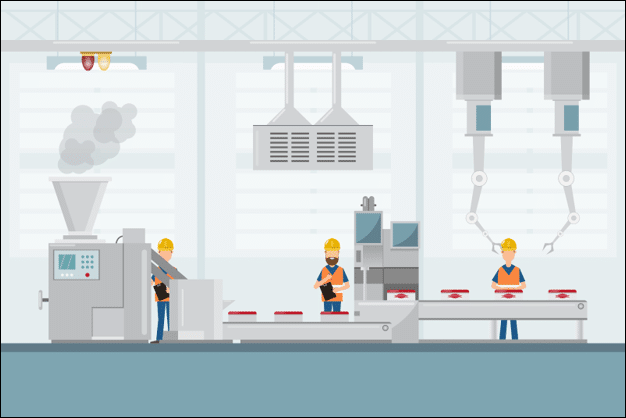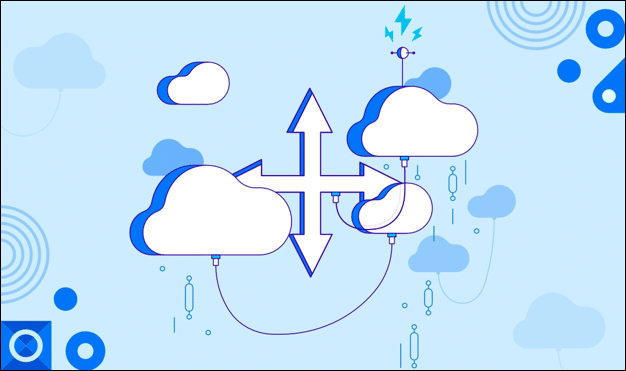In today’s dynamic and fast-paced digital landscape, businesses, and organizations regularly face the challenge of managing fluctuating workloads and ensuring optimal performance without over-provisioning resources. This is where autoscaling comes into play. But autoscaling has so far eluded distributed data systems like blockchains due to its self-imposed block size/storage limits and/or vertical scalability. Other than private and consortium database systems, no public/decentralized blockchain has demonstrated its ability to autoscale. Because it most often leads to centralization unless the network scales linearly/horizontally like Shardeum for instance.
Auto-scaling is important for quite a few notable reasons. Firstly, when you build a decentralized network, it should ideally be able to self-govern the number of nodes with an optimal and dynamic incentive mechanism. Maintaining high efficiency while scaling to meet demand is what will help keep the cost of the network and ultimately the average transaction fees low. Secondly, auto-scaling helps to maximize decentralization and security. You can check out the interesting blog about autoscaling by Shardeum, the first public blockchain to do so. This blog will focus more on the educational aspect of autoscaling.
Autoscaling automatically allows systems and applications to adjust their computing resources based on real-time demand. By dynamically scaling resources up or down, autoscaling enables businesses to handle peak workloads efficiently, improve responsiveness, and optimize costs by eliminating the need for manual intervention.
Table of Contents

Let’s unwrap: how does autoscaling work?
Autoscaling works by automatically adjusting the computing resources of a system or application based on predefined rules and metrics. It typically involves the following steps:
Autoscaling on Shardeum will work by measuring the network load every cycle (60 seconds) and coming to consensus on the required number of validator nodes needed to process the current load. This is similar to the Bitcoin network coming to consensus on its difficulty level.
For example, when an application on Shardeum goes viral, the network will react by independently adding more active validator nodes from ‘standby node pool’ to increase throughput capacity. If traffic on the network goes down, it would shrink the number of active validators and keep the operations on the network sufficiently nimble. Since Shardeum is a decentralized blockchain, auto-scaling is self-executed with help of validators distributed across the world (i.e. without any need for intervention from an intermediary)
The answer to why autoscaling is important is multi-facted. Here’s a few factors:

There are different types of autoscaling approaches based on how they respond to changes in workload:
Reactive autoscaling is a type that responds to changes in real-time workload conditions. It involves dynamically adjusting the computing resources based on predefined thresholds or metrics. Additional resources are provisioned to handle the increased demand when the workload surpasses a threshold.
Conversely, excess resources are de-provisioned to optimize resource utilization when the workload decreases.
Reactive autoscaling ensures that the system can adapt to sudden spikes or drops in demand, maintaining performance and availability. Reactive autoscaling helps prevent performance degradation and ensures a responsive and efficient system by closely monitoring the workload in real time and taking immediate scaling actions.
Proactive or predictive autoscaling is an autoscaling approach that takes a more anticipatory approach to resource allocation. It leverages historical data, machine learning algorithms, or predictive models to forecast future workload patterns and adjust resources accordingly.
Proactive autoscaling can predict upcoming demand changes by analyzing past patterns, trends, and seasonality. Based on these predictions, the system can proactively scale resources before the demand increase occurs. This approach helps ensure sufficient resources are available in advance, minimizing performance bottlenecks and maintaining optimal performance. Proactive autoscaling can improve resource utilization, reduce response times, and enhance system efficiency by anticipating and addressing workload fluctuations.
Scheduled autoscaling is an approach to autoscaling that involves preplanned scaling actions based on a predetermined schedule. With scheduled Autoscaling, resource adjustments are made at specific times according to a predefined schedule. This approach is useful for handling predictable workload fluctuations, such as daily or weekly patterns.
For example, during periods of expected high demand, resources can be scaled up to ensure optimal performance, while during known periods of low demand, resources can be scaled down to reduce costs. By adhering to a predetermined schedule, scheduled Autoscaling provides predictability and cost optimization and ensures that resources are available when needed without requiring real-time monitoring or dynamic adjustments.

Autoscaling offers several benefits:
Autoscaling helps lower energy consumption by optimizing resource allocation. It dynamically adjusts computing resources based on workload, preventing overprovisioning and idle resources. By provisioning resources only when needed, autoscaling reduces energy usage, promotes energy efficiency, and contributes to sustainable practices in IT infrastructure management.
Autoscaling brings cost-effectiveness by optimizing resource allocation. It allows businesses to scale resources based on demand, avoiding overprovisioning and unnecessary costs. With autoscaling, resources are provisioned dynamically, ensuring that the right amount of resources is available at the right time, optimizing spending, and maximizing cost-efficiency in cloud computing environments.
Autoscaling enables better load management by dynamically adjusting resources in response to workload fluctuations. It ensures systems can handle increased user traffic without performance degradation or bottlenecks. By automatically scaling resources up or down, autoscaling optimizes load distribution, maintains optimal performance, and provides a smooth and responsive user experience.
Autoscaling protects from website or app failures by automatically redistributing the workload in case of a failure. If a component fails, Autoscaling detects the issue and reallocates the load to other instances, ensuring continuity of service. This redundancy and fault tolerance provided by autoscaling help mitigate the impact of failures and maintain service availability for users.
Autoscaling enhances system dependability by ensuring optimal performance and availability. Autoscaling can handle workload fluctuations and maintain consistent service levels by automatically adjusting resources based on demand. This reliability and responsiveness make the system dependable, providing users with a seamless experience and minimizing disruptions even during peak usage or unexpected spikes in demand.
In conclusion, autoscaling offers numerous benefits, including lower energy consumption, cost-effectiveness, better load management, failure protection, and enhanced dependability. By dynamically adjusting computing resources based on demand, autoscaling optimizes resource allocation, improves performance, and ensures smooth operations. When it comes to public blockchains, the average transaction fee on the network will be constant and predictable only when the cost of operating and maintaining is kept low.
Further, it enables businesses to scale up or down seamlessly, adapting to changing workloads and avoiding underutilization or overprovisioning of resources. Autoscaling promotes efficiency, cost optimization, and responsiveness, allowing organizations to meet user demands effectively while maximizing resource utilization. As technology evolves, autoscaling remains a fundamental tool in achieving scalability, reliability, and optimal performance in the digital landscape.
Autoscaling is the capability of a system or application to automatically adjust its computing resources based on the current workload or demand. It dynamically provisions or de-provisions resources to ensure optimal performance, efficiency, and responsiveness without manual intervention. When it comes to public blockchains, the average transaction fee on the network will be constant and predictable only when the cost of operating and maintaining is kept low.
Autoscaling is primarily used in cloud computing environments to handle fluctuating workloads effectively. It allows systems to scale resources up or down based on demand, ensuring optimal performance during peak periods and cost optimization during low-demand periods. Autoscaling improves the scalability, availability, and responsiveness of applications or services, enabling businesses to meet varying user demands efficiently and reliably. Shardeum, a L1 smart contract platform, is the first network to implement autoscaling on its blockchain.
Since Shardeum scales linearly through dynamic state sharding, it can afford to incorporate autoscaling protocols on the network and overcome scalability trilemma. Autoscaling on Shardeum will work by measuring the network load every cycle (60 seconds) and coming to consensus on the required number of validator nodes needed to process the current load.
For example, when an application on Shardeum goes viral, the network will react by independently adding more active validator nodes from ‘standby node pool’ to increase throughput capacity. If traffic on the network goes down, it would shrink the number of active validators and keep the operations on the network sufficiently nimble. Since Shardeum is a decentralized blockchain, auto-scaling is self-executed with help of validators distributed across the world (i.e. without any need for intervention from an intermediary)
Layer 1 Blockchain | Blockchain Beyond Crypto | Best Crypto Youtube Channels | Difference Between Cryptocurrency and Blockchain | Best Crypto Faucets | Physical Layer in OSI Model | Advantages and Disadvantages of Decentralization | Ordinals NFTs | What are EVM Compatible Blockchains | Best Decentralized Storage Networks | What is Consortium Blockchain | What is EVM Wallet | Types of DDos Attack | What is AMM in Crypto | Blockchain Layers Explained | Custodial Wallets Vs Non Custodial Wallets | What is a Flash Loan Attack | Popular Metaverse Platforms | Cross Chain Ecosystem | Sharding Types | Wrapped Tokens | Hard Fork vs Soft Fork | What is Crypto Lending | What is Proof of Stake in Sharding | Blockchain Scalability Trilemma